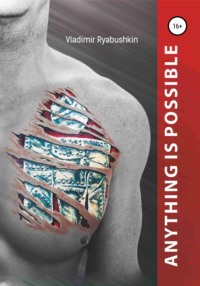
Anything is possible

Vladimir Ryabushkin
Anything is possible
Vladimir Ryabushkin
ANYTHING IS POSSIBLE
TIPS ON ATHLETE CONDITIONING
AND COMPLETION OF IRONMAN TRIATHLON
Translation from Russian by V.Y. Lymarev
Samara 2020
UDC 796.093.643.2+929Riabushkin
Riabushkin, Vladimir Yurievich.
ANYTHING IS POSSIBLE / Vladimir Riabushkin ; translation from rus- sian by V.Y. Lymarev. – Samara : Ofort, 2020. – 120 p. : il.
ISBN 978-5-473-01296-5
Book by Vladimir Ryabushkin, President of the Samara region triathlon Federation, is dedicated to the Ironman «Iron distance». In it, he talks about his childhood, youth, how he came to play sports without being a professional athlete, about his experience of passing this distance, about failures and victories. The book also provides practical tips and recommendations for those who are ready to test their strength by going the Ironman distance.
The book is addressed to everyone who loves sports and wants to become an «Iron man».
UDC 796.093.643.2+929Riabushkin
* * *
Riabushkin Vladimir
ANYTHING IS POSSIBLE
TIPS ON ATHLETE CONDITIONING AND COMPLETION OF IRONMAN TRIATHLON
LLC “Ofort”. 443080, Samara, ul. Revolyucionnaya, 70, lit. 3, оffice. 405-02.
telephone: +7 (846) 973-70-80, +7 (846) 973-70-55.
Printed in Russia.
ISBN 978-5-473-01296-5 © Riabushkin V. Y. , 2020
© Lymarev V.Y., еnglish translation, 2020
© Design of the publication. LLC “Ofort”, 2020
INTRODUCTION
In writing this guide, I attempted to give brief recommendations how to complete Ironman triathlon with minimum health impact and no unnecessary costs and how to become an “ironman”.
Don’t forget that this guide is intended for regular people who never did sports professionally.
But I hope that even active and ex-athletes can find something useful in it. If you decide to follow this guide and to complete Ironman, you will understand how unusual or, I could even say, unique it is.
The main priority is not to win the first prize but to complete the track within given time.
I imagine the reader of this
book as a person with a full-time job and family, with all related responsibilities and cares, quite a fulfilled person. But there is still competitive spirit dwelling within the reader, an urge to realize their potential even more, to test and find their physical and spiritual capabilities in a hard trial. And if you come up with such desire, you will get an opportunity to fulfill it. There are many ways to do it.
You only need to find out how to combine these ambitions with many responsibilities and everyday chores of a modern person, how to make all and not to lose everything. Probably many of you heard about “ironmen”. The book you read will give you a clear picture on the “iron distance”, provide you with the
motivation and skills to complete the course in order to become an “ironman”.
There are plenty of books, articles and videos on this topic, you can easily find them on the Internet. But the more you know, the more questions and doubts you have, just like I did. True understanding came only with experience as I tested the obtained information on myself through trial and error. I want to share my knowledge and prove with my experience that a person that never did sports can still become an “ironman”.
WHAT IS IRONMAN?
Many people know what Olympic triathlon is. In order to complete it, you must swim 1.5 km, ride 40 km on bicycle and, finally, run 10 km, with no breaks between these three stages.
The “iron distance” of Ironman is based on same principle. It starts with swimming in open water for about 4 km. As athletes complete the swimming stage and change clothes in the transition area, they start the cycling stage of 180 km. Upon its completion and after passing another transition area, they enter the running stage of 42 km, in other words, full-fledged Olympic marathon. All mentioned stages are a single race course that must be completed with no breaks in between.
Participants are given 16-17 hours to complete the course (time varies with different organizers, so read the rules of each competition thoroughly). If a participant runs out of time and fails to complete the course, he gets disqualified.
There are also time limits within the course: max 2 hours for the swimming, and no more than 10 hours for the swimming and cycling stages combined.
There’s also a so-called Half Ironman, or Ironman 70.3. This distance includes an open water swim of about 2 km, a 90 km cycling race and a half-marathon run of 21 kilometers. The time limit for Half Ironman is between 7 and 8 hours.
The slogan “the most important thing is not to win, but to take part” characterizes Ironman very accurately. The main thing is not to show the result better than the others, but to reach the finish line and meet the time limit.
HOW TO GET READY
for Ironman
There are three options to prepare yourself for the “iron distance”.
The classic strategy, the most common in various sports disciplines, is training under the guidance of a professional coach. It’s not that difficult to find coaches for the three distinct disciplines that make up the Ironman complex: running, swimming, cycling. But, unfortunately, there are not many good coaches who specialize in Ironman, and in Russia they are few. I don’t believe in “remote coaching” when there is no direct contact between a coach and an athlete, there is no possibility for the coach to analyze and correct the athlete’s technique. And remote coaching is very expensive. In my opinion, it is not reasonable to spend serious money on any training programs that are not customized to you. You can find them for free.
The second option is to train for each of the three sports separately; in this case it is easier to find qualified trainers. But here there will be a problem of matching the schedules of the three types of training with your schedule, taking into account the times when the coaches and you are available for training. In
addition, this option will be very expensive. In addition, everyone who trains long enough knows: A good cyclist is no longer as fast after the swimming stage as a good runner after the cycling stage. This is exactly the complexity and exclusivity of the “iron distance”. In my amateur opinion, it makes sense to engage coaches in certain sports to learn the technique, if you have never swimming, cycling or running at all.
The third option is to make a program for yourself based on the literature you’ve studied and start training yourself. But I’ve already told you: in the process of self-study there may be many questions – maybe more than answers. After all, there are so many people, so many opinions, and everything has to be tested experimentally by yourself.
In this book, I made an attempt to combine the analysis of theoretical positions with practical training experience. By reading this guide and using this information in your own practice of training, you will be able to adjust and improve your results. And most importantly, it will increase each athlete’s chances of reaching the finish line in one piece.
ABOUT SAFETY
Of the three components of the iron distance, the cycle stage undoubtedly has the highest injury rate.
The main mistake that causes athletes to get hurt and have accidents is the feeling that you can do anything. It if happens, you let yourself
relax and lose your vigilance. It is particularly unacceptable to let your guard down on the road when riding a bike. The backslash always comes unexpectedly and can be very fast. Even if you have traveled tens of thousands of kilometers and feel as one
The main mistake that causes athletes to get hurt and have accidents is the feeling that you can
do anything. It if happens, you let yourself relax and lose your vigilance.
with your bike, the false sense that you in control and everything is nothing to you now could be disproven in a heartbeat.
Unfortunately, that's what happened to me. Unexpectedly for everybody and first of all for myself, I got injured during the cycling stage.
It happened during a training camp in Cyprus. We used to go there often on short trips, especially when the weather at home, in Samara, wouldn’t let us train anymore. During cycling training, I got my front wheel colliding with the back wheel of the cyclist riding in front of me, lost my balance and tumbled off the road. It all happened in the blink of an eye: I can’t remember the
fall, but according to eyewitness accounts, it was an impressive sight to behold.
We were cycling on a highway, and I was still lucky there was neither oncoming nor following traffic. And it was a good thing that roadside bollards in Cyprus are made of plastic…
As a result of the fall, my left shoulder was badly injured with all my ligaments and tendons torn. It hurt, but the most unpleasant thing for me was the news that I would not be able to have a proper training for almost six months. Which means I was going have to start all over again later. All my plans for the next year were disrupted. It is still unknown how long it will take for me to recover, and in what physical condition I will approach the competition.
ABOUT THE ATHLETE’S HEALTH
Before starting training, a beginning ironman should find a sports doctor, consult with them and get at least a minimum medical check-up.
Before starting training, a beginning ironman should find a sports doctor, consult with them and get at least
a minimum medical check-up.
It's mandatory to take blood and urine tests. You need to find out what is missing in your body and prepare it for
severe physical exertion. In addition, it wouldn't hurt to check the heart, and necessarily under stress. A cardiac stress test means an examination either on a treadmill or on a stationary bike. The doctor analyzes the resulting cardiogram to determine the maximum and best heart rate under exertion.
For a start, it is extremely important to know your maximum heart rate, at least theoretically. You must not exceed this threshold. It is also useful to know the working range of your heart rate, at which you’d be able to withstand physical exertion for a long time.
Be sure to determine your heart rate, otherwise you will train blindly and stupidly.
The upper limit of the working range is exactly the boundary between your aerobic and anaerobic ranges.
Aerobic mode is the mode where your body has enough oxygen and you can talk comfortably enough. In this mode, your muscles work without overloading, and it is enough time for lactic acid to disperse.
Anaerobic mode is the mode where oxygen deprivation is created and lactic acid in your muscles does not have time to disperse. After some time in this mode, your muscles are likely to fail.
If you continue to exercise in aerobic mode, there will be a moment when you begin to lack breath, and it becomes strained and intermittent. That means you’ve hit the aerobic threshold.
The main task of an athlete is to shift the boundary between these modes and increase the aerobic range, and this is achieved by training. If you train, all your performance indicators will change for the better over time. This can be confirmed by a second visit to the sports doctor, who will record your success.
You will find a lot of information on how to deal with your heart rate and aerobic and anaerobic thresholds in specialized literature. The above is a very simplified method, but it is workable enough, especially if you are at the beginning of your sporting journey.
Be sure to determine your heart rate, otherwise you will train blindly and stupidly.
NECESSARY EQUIPMENT
In order to make your training effective and to succeed in competitions in the future, it is very important to choose the right equipment. Here is a list of necessary items and specific models formed on the basis of my experience:
1) sports watch;
2) velocity sensor;
3) heart rate sensor;
4) cadence sensor (cadence is the rate of the bike’s pedals turning).
SPORTS WATCH. Garmin 910 and later models are, in my opinion, the best in quality-price-capability, proven by time and practice of races. The following data fields on the screen of Garmin 910 are set up for the running stage (Fig. 1):
time (timer); pace; distance; heart rate.
For the cycling stage, the following fields are set up (Fig. 2):
a) on the first page: speed; cadence;
heart rate; slope.
b)
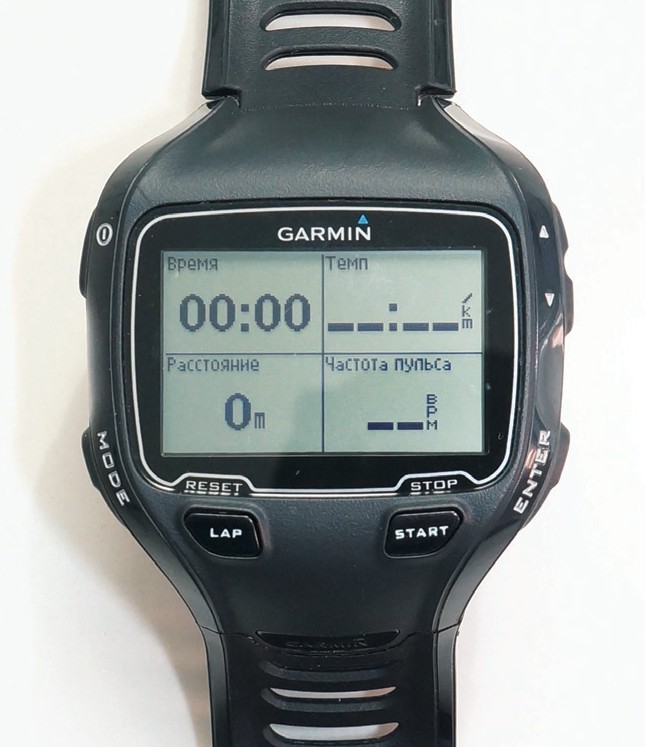
average speed; time (timer); distance.
Fig. 1. Setting up Garmin 910 data fields for the running stage

Fig. 2A, 2B. Setting up data fields on the first and second pages of the cycling stage
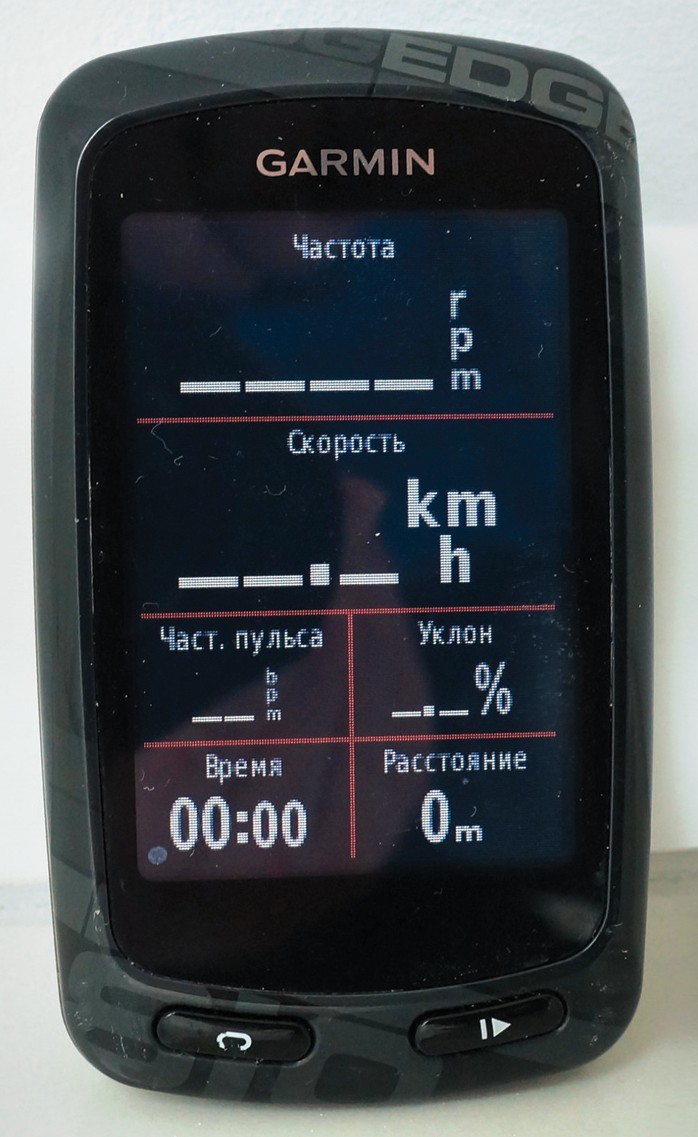
Fig. 3. Setting up data fields of Garmin 810 fields for the cycling
cadence; speed; heart rate; time (timer); distance; slope.
SPEED SENSOR.
Technically, Garmin watches have a built-in GPS sensor that will determine your speed, but its readings depend on the quality of satellite signal reception. With a speed sensor, you will be not dependent on the satellites, and your speed data will be more accurate. But you can easily go without it.
HEART RATE SENSOR shows the number of beats of your heart per minute (Fig. 4).
By using this parameter, you can monitor your overall physical condition during training and at competitions, the impact of physical exercise on your body, plan your training loads, analyze the results achieved and determine your progress in sports development. All this is quite possible for an amateur athlete.
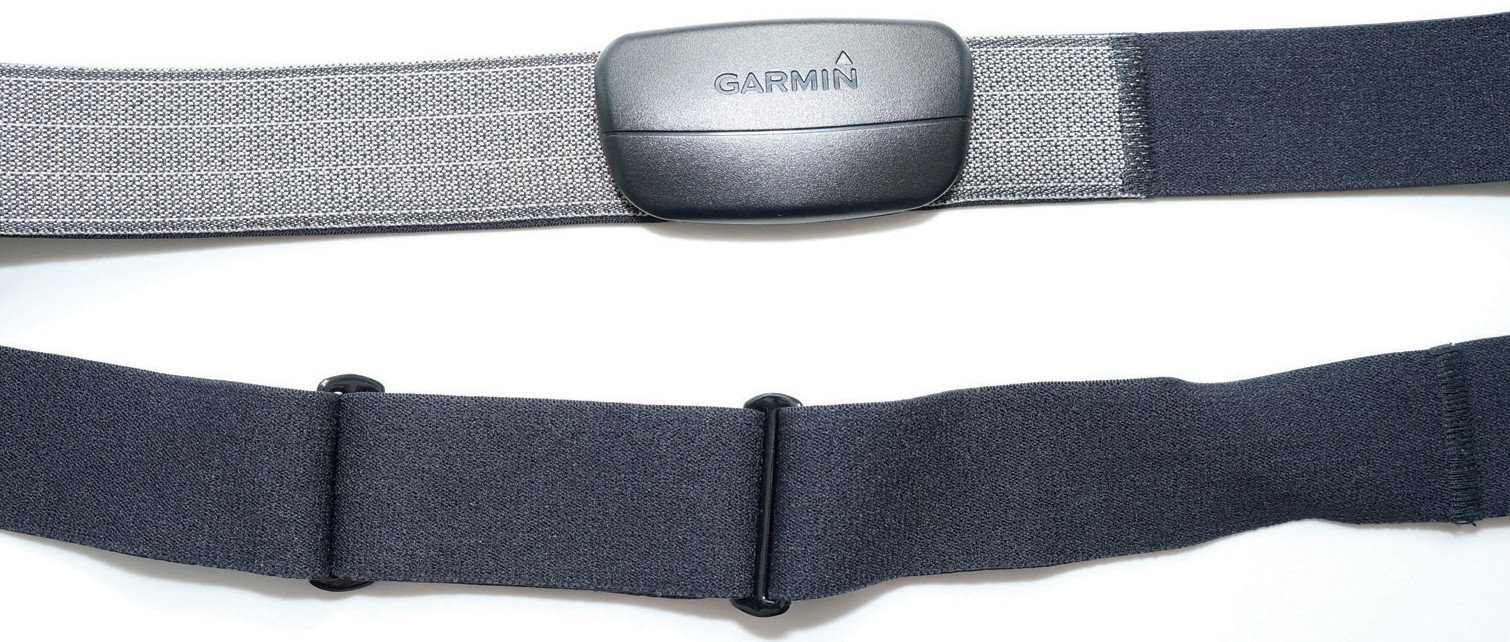
It is easy to keep your heart rate in check, just buy a heart rate monitor and connect it to Garmin.
Monitoring your heart rate is the best way to keep an eye on your condition concerning the price-performance ratio. A power sensor can also be used for planning and monitoring your training. This is a very useful but very expensive thing. Relatively cheap models, unfortunately, are not yet reliable enough.
At the initial stage, it will be enough to focus on heart rate monitoring. You need to know and remember: is it possible to overcome the Ironman distance, as well as the Half ironman and the Olympic distance, only in aerobic mode. This is especially true for beginners.
CADENCE SENSOR shows the number of pedal revolutions per minute (Figure 5).
This is a very important part of your training. With a heart rate monitor you keep in check your whole body; it helps to protect the heart. Cadence sensor makes it possible to monitor your undercarriage (which is your legs) and optimize the load on them. For the running stage, there is also a special speed and distance sensor, with which you can monitor the cadence, here meaning the number of steps per minute. It is mounted on one of your running shoes and serves as an alternative to the GPS sensor. It is convenient to use it during training indoors, in gyms, on treadmills where it is impossible to catch satellite signal.

Fig. 5. Cadence sensor
RUNNING TRAINING PLAN
If you are not a former professional athlete and have never run more than 10 km in your life, and there is not much time to prepare for the competition, but you actually want to run a marathon, it is advisable, as I do, to make a running plan for yourself. It is made based on several parameters. It is necessary to know your speed in aerobic and anaerobic modes, the ratio of speed and heart rate, time required for recovery, your general condition and heart rate at different distances, the condition of your legs. It is clear that it is necessary to make training runs, during which the necessary data is collected.
The essence of the technique is to divide the marathon distance into shorter sections. It can be divided into either time or distance sections, as you see fit. Running sections alternate with walking sections. The length of these segments and their
It is necessary to know your speed in aerobic and anaerobic modes, the ratio
of speed and heart rate, time required for recovery, your general condition and heart rate at different distances, the condition of your legs.
combination depends on the individual parameters of each. The scheme also depends on the planned time within which you want to run the marathon.
Ideally, it is a good idea to test the scheme you have made up for yourself in a training run. This can be done at a shorter distance as well, you don’t have to run all 42 km.
It is important to feel comfortable on the distance: running sections should not get you exhausted, and walking sections should be long enough for you to recover.
It is important to feel comfortable on the distance: running sections should not get
you exhausted, and walking sections should be long enough for you to recover.
This may look like this: 10 km running;
1 km walking;
10 km running;
1 km walking;
10 km running;
1 km walking;
9 km running; Total: 42 km.
In total, you are running for 39 km and walking for 3 km. If your running time for 1 km is about 5 minutes 40 seconds, then you will run every 10 km in 56 minutes 40 seconds. The total running time will be 3 hours and 41 minutes. At walking pace of about 9 minutes 40 seconds per 1 kilometer, the total walking time will be 29 minutes. We add up everything and get the total marathon time: 4 hours and 10 minutes. It means 5 minutes 56 seconds per kilometer on average. If you can run 10 km, and 10 minutes of walking is enough for rest and recovery, then you
can say with certainty: you are able to complete the marathon distance, and in a very good time.
I describe this scheme just for clarity, you do not need to stick to it, everyone must find their own. There is an infinite number of variations. The main thing is that if you have decided to run according to the scheme, do not deviate from it.
I’ll warn you right away: you’ll be tempted to run out of the plan. This desire is especially strong at the beginning of the marathon, when you are still fresh, full of strength and energy. Other runners are dashing ahead, the crowd of fans welcomes you and encourages you to keep running without rest. It will seem that you should not waste time on walking, it is quite possible to save time by running not 10 km, but 20 km.
Make no mistake, force yourself to stop and stick to the plan. Otherwise, you're going to have a very tough challenge after 30 kilometers.
If you've been able to put together and practice a marathon plan that is suitable for you, it can be used at Ironman distance as well.
The main thing is that if you have decided to run according to the scheme, do not deviate from it.
No matter how easily you did the marathon, the plan
will still need to be adjusted to take into account that you will run the marathon distance after 4 km of swimming and 180 km of cycling. Believe me, you’ll feel the difference. There is evidence that amateur athletes have about an hour of difference in the resulting time between regular and Ironman marathons, especially beginner athletes. Based on this, you can predict your time in Ironman running stage.
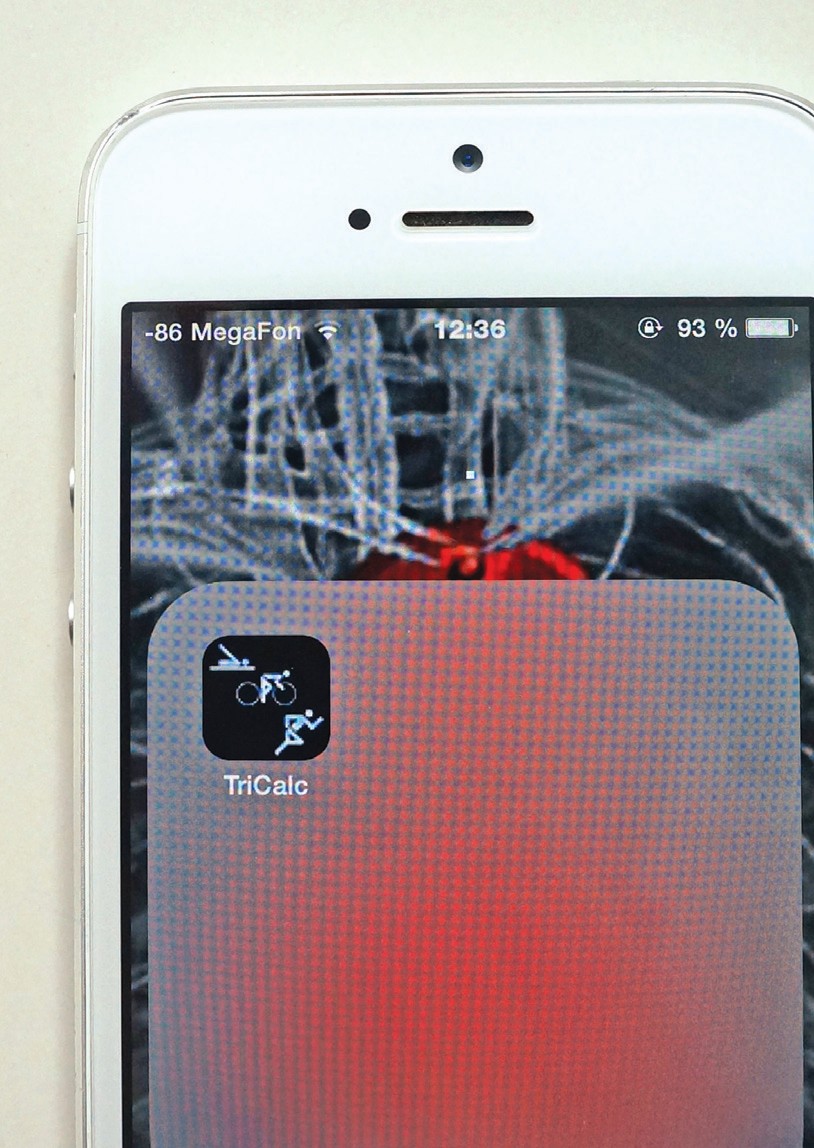
Fig. 6. TriCalc app
TRAINING
I’m not a coach and can’t make a customized training program for you. All I can do is tell you how I train myself.
I’ll take our training camp in Cyprus as an example. It lasted no longer than 10 days, but in my opinion, it was very intense in terms of training. Every day was similar to another one, the exception was the weekends:
06-00 – waking up;
06-15 – 1 to 2 km swimming in open water; 7-00 – breakfast;
8-15 – 50 to 120 km cycling;
13-00 – lunch;
13-30 – rest, sleep;
16-00 – jogging: 10 to 25 km by distance or 1 to 2 hours by time;
19-00 – dinner; 22-00 – bed time.
Of course, the duration and intensity of training differed from day to day depending on the upcoming race, but the schedule was unchanged. Lovely Cypriot wine and the usual tourist activities were strictly prohibited.
At home, the training program was arranged differently: cycling on Monday;
running on Tuesday; swimming on Wednesday; cycling on Thursday; running on Friday; swimming on Saturday;
the Sunday is a day of rest.
While being in Russia, with all work, family and other chores, it is not always possible to stick to the training schedule, so there are some deviations.
There are different types of training, such as endurance and speed. At the initial stage, it is better to train endurance.
It is optimal to train at a half of the competitive distance, i.e. to swim 2 km, to ride a bicycle 90 km and to run 15 km.
Once a week or two weeks, a single long training is necessary: swim from 3 to 4 km, cycle from 120 to 150 km and run from 20 to 30 km.
If you are working on your speed, interval training sessions will help. Interval training means alternation of intensive physical exercise with short rest periods or light (recovery) loads.
For example, you swim 25 meters at maximum speed and then rest for the next 75 meters (you swim in a relaxed way, probably in a different style).
On a bicycle, you cycle at full speed for 3-4 minutes at most and then you rest for the same amount of time.
On the run you accelerate at a maximum speed of 300-500 meters and then relax for 1 km, reducing the running pace, but not slowing down to walking.
The higher your fitness is, the less time you need to rest and recover.
Please do not treat my proposed
options as a dogmatic statement to blindly follow. There is a lot of possible options, and the choice depends primarily on your level of training.
The higher your fitness is, the less time you need to rest and recover.
You should do some speed training to improve your performance as well,
You should do some speed training to improve your performance as well, but proceed to it only after having
enough endurance to withstand the load.
but proceed to it only after having enough endurance to withstand the load. That speed training can be like this: 4 km swimming on Monday, 140 km cycling on Tuesday and 25 to 30 km running on Wednesday.
If you feel okay after that, you can include interval training in your plan and work consistently on increasing your power and speed.
If there is enough time and you feel strong enough, you can add swimming to your training program on cycling/running training days. For example, if you were cycling or running in the morning, you can swim in the evening.
If you are in good shape, you can do a double training set by combining cycling and running training. This is very useful,
as it teaches muscles to quickly adapt to the load change and switch from cycling to running without any trouble.
In a double training, you shouldn’t get yourself exhausted with a long running distance. To develop “muscle memory”, it will be enough to run from 3 to 5 km after the cycling.

